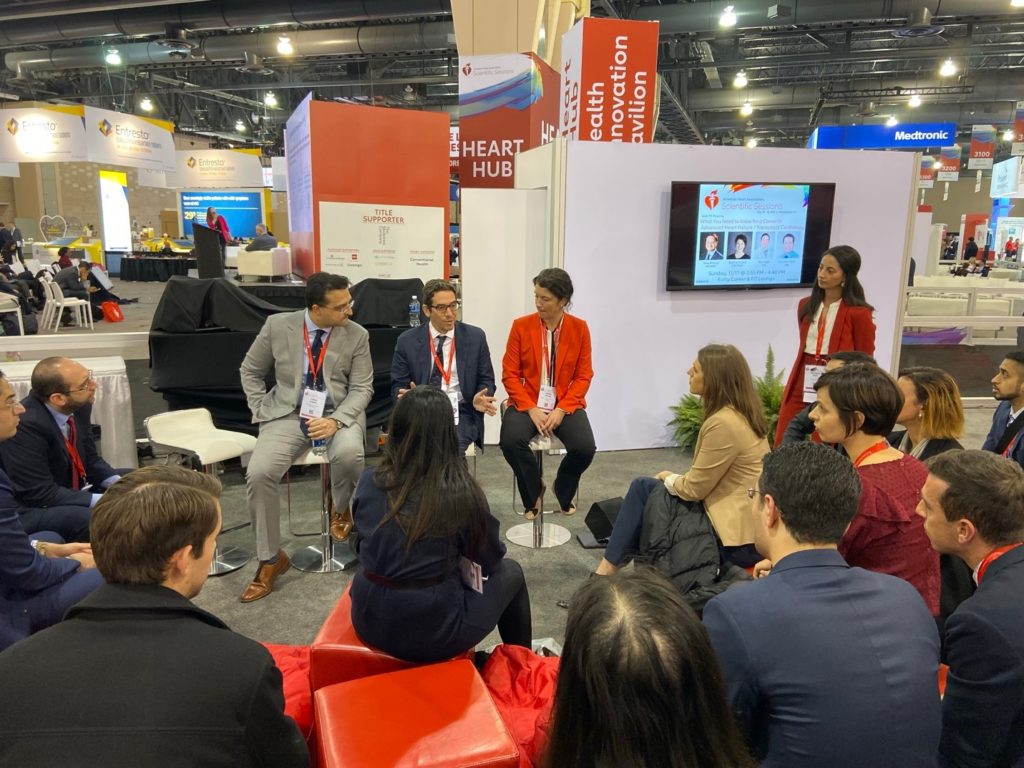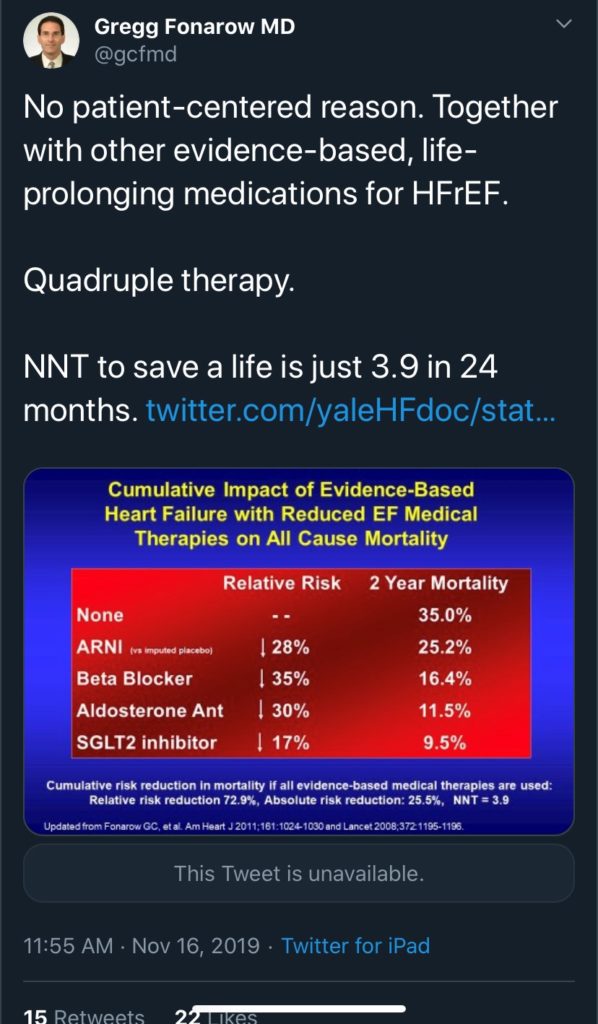“Skate to where the puck is going, not where it has been.” -Wayne Gretzky, Hall of Fame Hockey Player
I heard this quote a few times at #AHA19, most relevantly during a special interest “breakout” session for Advanced Heart Failure & Transplant Cardiology held in the AHA Early Career / FIT Lounge. In reflecting on the hot topics of the meeting, as well as the landmark clinical trials that have been published over the course of my training, I couldn’t help but agree with the following notion discussed in the breakout session:
Heart Failure is where the puck is going.

Dr. Tariq Ahmad, Dr. Eric Adler, and Dr. Sophia Airhart serving as expert faculty panelists for the Advanced Heart Failure & Transplant Cardiology breakout session in the AHA Early Career / FIT Lounge at #AHA19.
As a current Advanced Heart Failure fellow, I am clearly biased here. But after the field experienced a decade-long drought absent of new effective therapies to improve the outcomes of patients with heart failure, the landscape changed in 2014 with the publication of the PARADIGM-HF trial and its effect of adding angiotensin receptor-neprilysin inhibitor (ARNI) therapy to the armamentarium of cardiologists treating patients with heart failure with reduced ejection fraction (HFrEF).
Fortunately, since PARADIGM-HF, the momentum has continued to build. The addition of effective new therapies for patients with heart failure has not stopped with ARNI. In 2015, with the EMPA-REG OUTCOME trial, we began to see the signal for improved heart failure outcomes (reduced heart failure hospitalizations), with the use of a sodium glucose-cotransporter 2 inhibitor (SGLT2i) in patients with diabetes, generating excitement for the potential for SGLT2i therapy in heart failure. In 2018, we learned of our first effective treatment for transthyretin amyloid cardiomyopathy, which is now FDA-approved and quickly making its way to our patients.
Presentations at #AHA19 kept this wheel turning, as there were key studies presented that continue to shape the new frontier of therapies for heart failure.
- DAPA-HF: The DAPA-HF trial was the first to study the efficacy of SGLT2i as a heart failure therapy, even in patients without diabetes. While initial results were presented at the European Society of Cardiology (ESC) Congress in September 2019, further insights from the DAPA-HF trial were presented at #AHA19, demonstrating that the significant effects of the SGLT2i, dapagliflozin, on reducing the risk of death and improving heart failure outcomes in HFrEF spanned across the spectrum of ages studied, demonstrating efficacy even in the elderly. Further, dapagliflozin improved the health status in patients with HFrEF, based on the Kansas City Cardiomyopathy Questionnaire.
- PARADIGM-HF + PARAGON-HF: The results of the PARAGON-HF trial, presented earlier this year, did not show significant added benefit of sacubitril/valsartan therapy in reducing adverse events in patients with heart failure with preserved ejection fraction (HFpEF) compared to valsartan therapy alone. However, a pooled analysis of the PARADIGM-HF & PARAGON-HF trials was presented at #AHA19 by Dr. Muthu Vaduganathan from Brigham & Women’s Hospital. This analysis suggested that the therapeutic effect of sacubitril/valsartan may extend into the heart failure with mid-range ejection fraction (HFmrEF; LVEF 40-49%) range. Interestingly, there appears to also be differential response between men and women to sacubitril/valsartan. The HFmrEF category has been garnering more interest lately, and this study points to a potential benefit of ARNi therapy in this group.
- VICTORIA: While not presented at #AHA19, the announcement of positive results for the VICTORIA trial was made shortly after the conclusion of the conference. The VICTORIA trial studied the soluble guanylate cyclase inhibitor, vericiguat, in patients with HFrEF, and per the press release, “reduced the risk of the composite endpoint of heart failure hospitalization or cardiovascular death.” This class of medications is most well-known for riociguat’s use in chronic thromboembolic pulmonary hypertension, but, depending on the results of VICTORIA, which will be presented in 2020, it may constitute yet another class of effective medications in the heart failure toolkit.
With new, effective medical therapies continuing to emerge for patients with heart failure, the field is making progress at chipping away at the high mortality rates that still plague our patients with heart failure. With the impending approval of SGLT2i for patients with HFrEF, we are now entering an era of “quadruple therapy” for HFrEF, with significant efficacy if adequately implemented.
Combine these exciting developments with the concurrent advances in structural therapies (i.e., percutaneous valve repair/replacement) and eventual development of a fully implantable left ventricular assist device (LVAD), I believe that heart failure is a cardiology subspecialty on the rise and that undifferentiated trainees should do one simple thing: Skate to where the puck is going.
The views, opinions and positions expressed within this blog are those of the author(s) alone and do not represent those of the American Heart Association. The accuracy, completeness and validity of any statements made within this article are not guaranteed. We accept no liability for any errors, omissions or representations. The copyright of this content belongs to the author and any liability with regards to infringement of intellectual property rights remains with them. The Early Career Voice blog is not intended to provide medical advice or treatment. Only your healthcare provider can provide that. The American Heart Association recommends that you consult your healthcare provider regarding your personal health matters. If you think you are having a heart attack, stroke or another emergency, please call 911 immediately.
